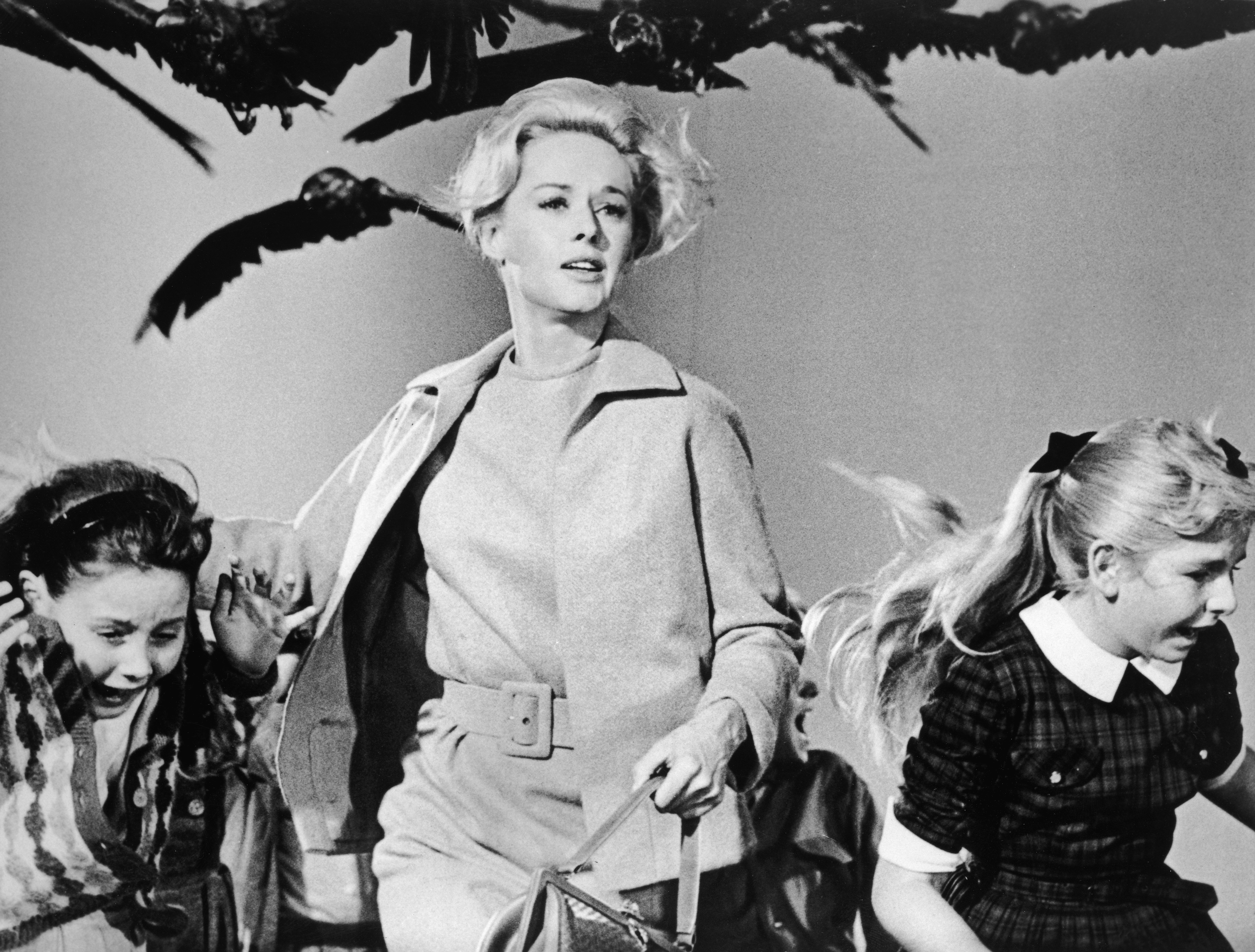
In early 1963, screenwriter Evan Hunter sat in a screening room with Alfred Hitchcock. They were watching an early cut of The Birds, the avian-nightmare classic that Hitchcock directed from Hunter’s screenplay. As the opening titles appeared, blue lettering superimposed over footage of fluttering birds, Hunter noticed something strange: There was no music. Just the trilling, high-pitched sounds of the creatures themselves.
Hitchcock had decided “there would be no score for The Birds,” Hunter recalled in his memoir, Me and Hitch. “Unmindful of his artistic pretensions for the film, I told him I thought that would be a mistake; that music could subtly foreshadow dire events to come or stridently accompany bird attacks until we had the audience screaming. He said no. No music.”
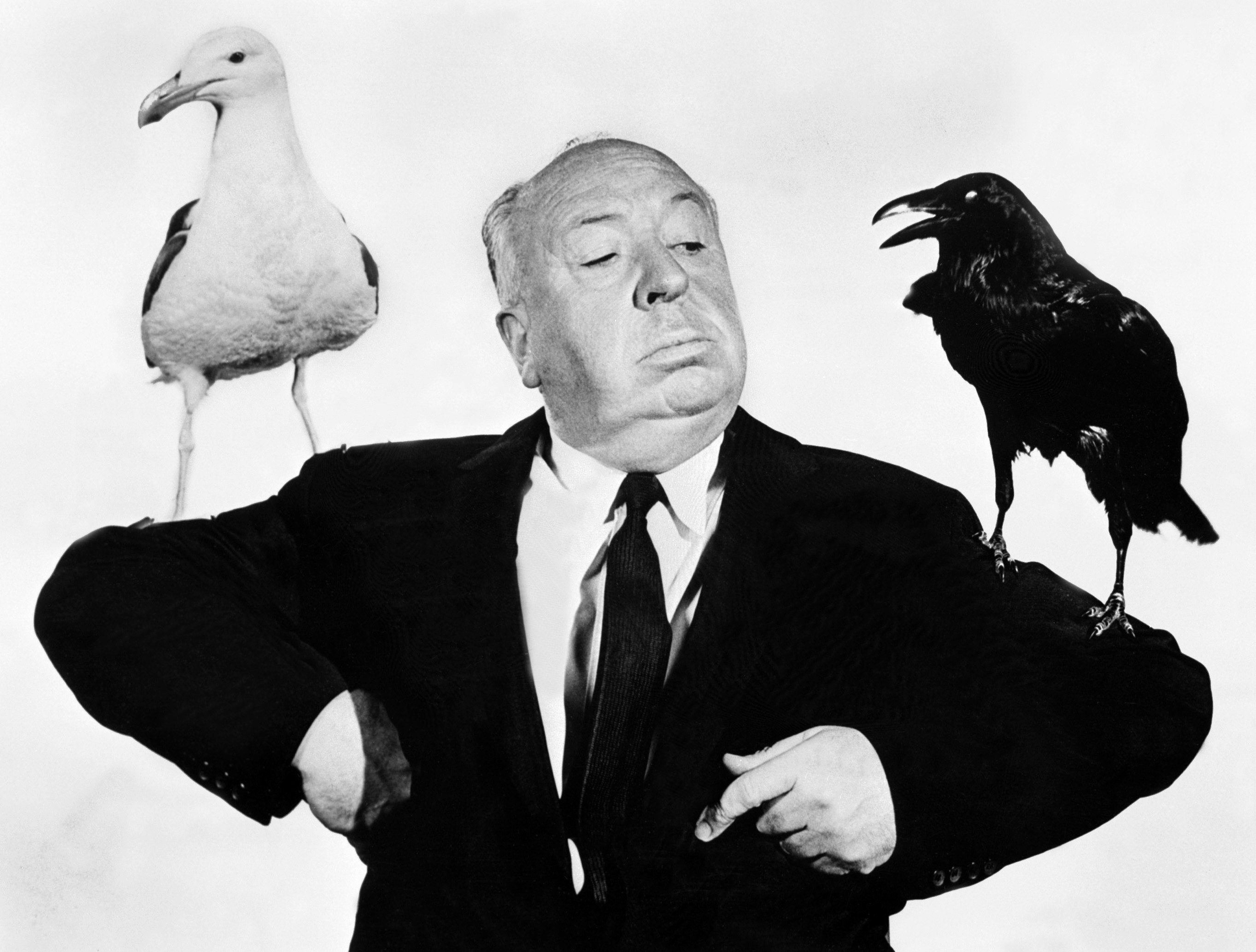
The film, which arrived 60 years ago this week, remained true to this radical formal experiment: Alone among the major studio films of its day, The Birds is completely bereft of nondiegetic music (that is, music that is external to the world of the film and cannot be heard by characters), pulling viewers into a world of threat and danger without the conventional guideposts of a musical score. Instead, the emphasis is on the terrifying screeches, squawks, and wing flutters of the birds themselves — a pioneering electronic sound design generated with the help of a Mixtur-Trautonium, an early synthesizer — and the eerie quiet in between their attacks on a small coastal village.
“I would say it’s the grandest audio experiment,” veteran sound editor Skip Lievsay tells Inverse. “It’s the most dramatic audio choice that you can make, even more than silence.” Lievsay is known for his collaborations with directors such as Joel and Ethan Coen and Alfonso Cuarón.
And it isn’t just sound specialists who speak reverently about Hitchcock’s sonic brilliance.
“I think that’s an underutilized opportunity, [to use] sound design in a way to sort of pull you into something and set some rules down,” says Todd Field, the filmmaker behind Tár. “There’s nothing more frightening or more thrilling than this idea that you’re being hunted — and that you get to hear the sound of the creature that’s doing the hunting.”
Hitchcock’s musicless approach was a staggering departure from Vertigo (1958), North by Northwest (1959), and Psycho (1960), all of which used memorable scores by Bernard Herrmann to underscore action and suspense. By eschewing music in The Birds, Hitchcock wasn’t just exploring the opposite extreme, he was instilling the film with a frightening sense of vérité, forcing viewers to hear only what his protagonist Melanie (Tippi Hedren) and the other characters hear.
And he employed cutting-edge sound technology to achieve such an effect. “Even by today’s standards, the sound effects are really spectacular and varied,” Lievsay says. “And high-fidelity, too. In an average movie of that time, cars and ambiences and even doors and stuff aren’t necessarily very authentic-sounding. And yet, those birds are such a home run. They really are scary.”
“Just quiet (or disquiet), like real life.”
Hitchcock was challenging himself to work outside the confines of Hollywood convention, wherein musical score provides an emotional shorthand for the audience. As the filmmaker once famously remarked, “In a good movie, the sound could go off and the audience would still have a perfectly clear idea of what was going on.”
Few stylistic choices in The Birds proved more audacious or more influential — and not just in the horror sphere. Although Hitchcock had flirted with eschewing music in limited-location films such as Rope and Lifeboat, The Birds broke with decades of Hollywood tradition and gave filmmakers permission to explore unnerving sonic realism. Inverse spoke to two acclaimed filmmakers and several sound editors to understand how the sound of The Birds influenced everything from the modern "quiet horror" movement to the Coen Brothers to Todd Field’s singular character study Tár.
The quiet horror revolution
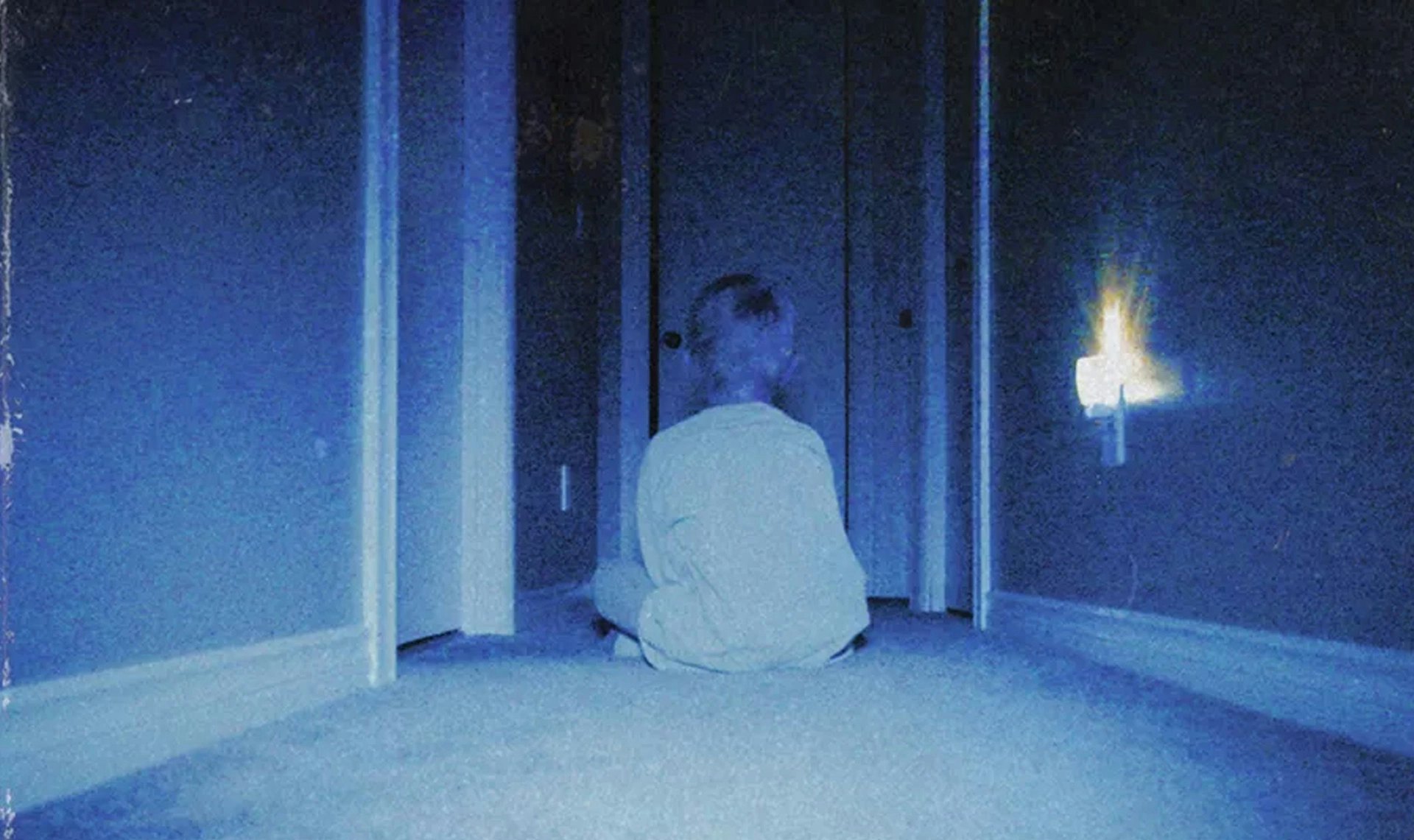
In 1963, Hitchcock’s approach polarized critics. Sixty years later, it’s clear that The Birds expanded the parameters of sound editing, made room for more ambient sound design, influenced subsequent generations of filmmakers, and arguably paved the way for the “quiet horror” movement.
“One thing that stands out, particularly for the era, is how realistic the sound feels due to the lack of background music,” Canadian director Kyle Edward Ball tells Inverse. “No sweeping symphony. No lush Bernard Herrmann music. Just quiet (or disquiet), like real life.”
In 2022, Ball’s feature filmmaking debut, the eerie, no-budget Skinamarink, has become the sleeper hit of the horror season. Filmed in the director’s childhood home on a budget of $15,000, Skinamarink is minimalist in both sound and vision. More atmosphere than plot, its grainy, abstract tale involves two children awoken in the middle of the night to discover that their father is missing and a mysterious force is in the house. There is no nondiegetic score. Instead, the film’s only music emanates from vintage cartoons flickering on the television. Ball describes the sound design as “quiet, crunchy, realistic, and eerie.”
“From day one, I wanted to forgo a background score,” he says. “I think it’s scarier this way. In the silence, all you have is yourself.”
“It’s just this constant creeping of something being wrong.”
Naturally, he was inspired by the Master of Suspense.
“The lack of background score in The Birds was part of the inspiration for not using a score in my movie,” Ball says. “The Birds has had a huge impact on me as a filmmaker. It’s just this constant creeping of something being wrong. Something out of place. Long stretches of silence followed by cacophonies of sound. The flashlight up the stairs scene, where Tippi Hedren discovers the room full of birds in the upstairs room, is a 101 in suspense building.”
Some critics have described Skinamarink as part of a “quiet horror” movement, a loosely defined category that includes hushed thrillers A Quiet Place (2018) and its 2021 sequel, as well as The Silence (2019) — films that centralize silence in both style and plot. (Ball doesn’t object to this classification.)

But if there’s a connective tissue leading from The Birds to Skinamarink, it may lie in the found-footage flicks that have dominated horror studios in recent decades: franchise starters like Paranormal Activity and Cloverfield, as well as the modern crop of “screenlife” movies, like Unfriended or Host. Such films reward low budgets, avoid non-source music, and emphasize harsh, realistic sound design to better give audiences the illusion of “authentic” footage. They reflect a guiding principle of The Birds: The less you underline the horror with cinematic scoring, the more truthful it feels.
The Blair Witch Project, the 1999 pseudo-documentary that launched found-footage horror into the mainstream, crystalized this approach. Made on a microbudget with deliberately amateurish production values, the film follows three young filmmakers camping out in the Maryland woods in search of a mythical witch. Until the end credits, there is no music, because why would raw footage have music?
In one of The Blair Witch Project’s most terrifying scenes, sound design supersedes image. As in The Birds, our protagonists are in a remote place, being stalked by some malevolent force which they initially can hear but not see. The three are in their tent at night, petrified by the sounds of sticks snapping and bizarre guttural noises growing steadily louder outside the tent. That we can’t see what’s making the noises makes it all the more frightening; that there is not a musical pulse manipulating our emotions makes it all the more real.
No music for old men
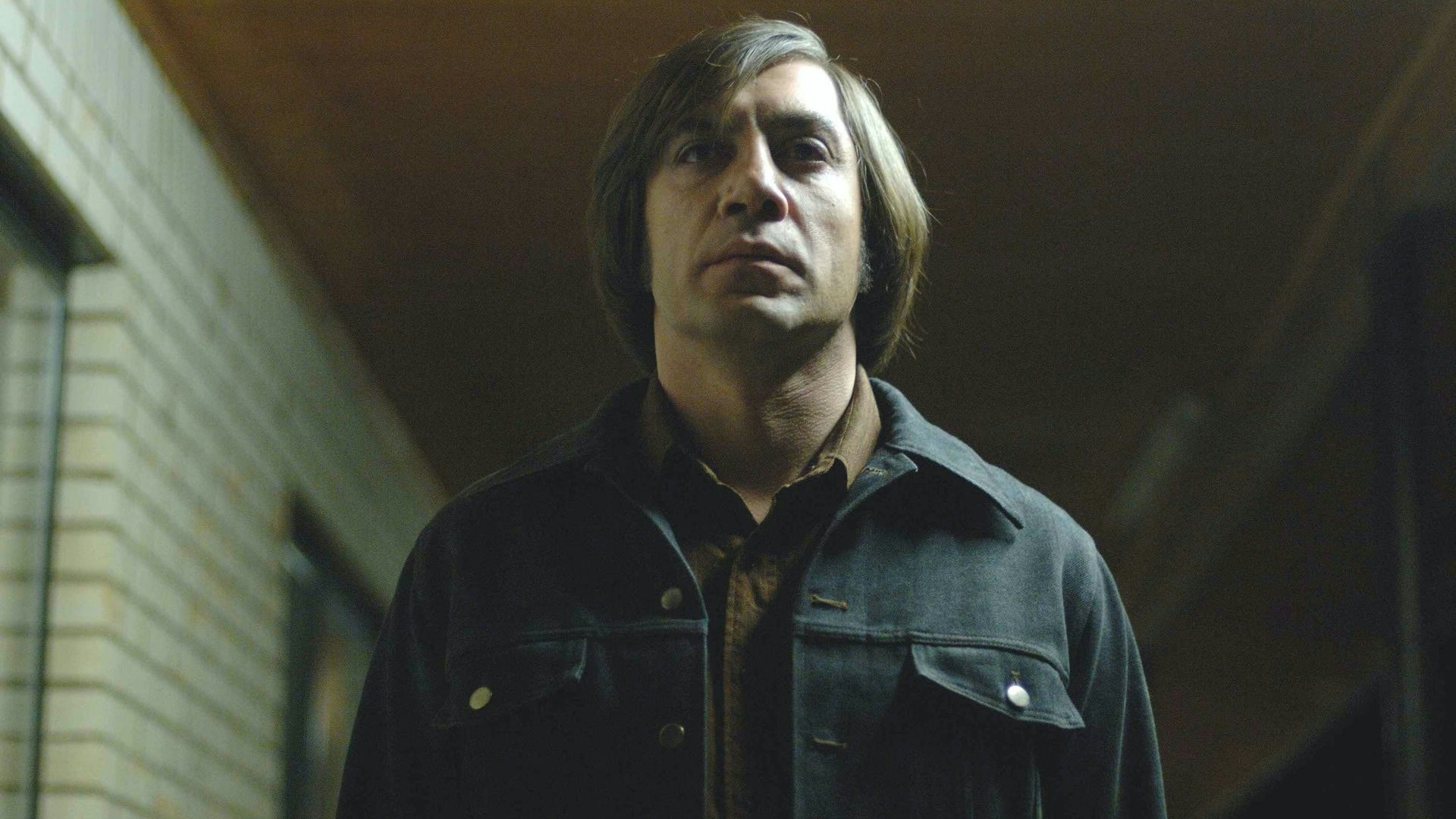
Skip Lievsay knows firsthand how influential The Birds’ sound design has been. In his capacity as longtime sound editor for the Coen Brothers (with whom he’s worked since 1984’s Blood Simple), he contributed to perhaps the most celebrated narrative film ever to echo the Hitchcock flick’s uneasy quiet: No Country for Old Men.
“Joel Coen was specifically interested in trying to do the movie with no music as an experimental attempt to make a movie like The Birds,” Lievsay recalls. “It’s the most well-known example of a studio movie that doesn’t have music.”
“The music cues must enter on the wind.”
The Coens’ 2007 neo-Western masterpiece does contain snatches of music, composed by their usual collaborator Carter Burwell, but they’re kept to a minimum: ambient murmurs that blend in with the unforgiving desert landscape. Just as The Birds was a one-eighty from Hitchcock’s prior work with Herrmann, No Country was a stark departure from the Coens’ previous emphasis on music: the high-octane yodeling of Raising Arizona, the orchestral sweep of Fargo, the Creedence grooves of The Big Lebowski, and the vintage bluegrass and folk immersion of O Brother, Where Art Thou?
“It wasn’t a unanimous choice. Ethan, I think, always expected that there would be music,” Lievsay says. But during an early screening of the film with composer Burwell, they all agreed that it worked with minimal music. “Ethan said, ‘OK, Carter, you make music cues for the movie. The music cues must enter on the wind, be indistinguishable from the wind, and exit where it came in.’ I think it was a fair compromise. And, in fact, Carter made several cues. They all hover right in the sound design area.”
Craig Berkey, the re-recording mixer and sound designer, recalls, “As we were going to do the final mix, I was expecting somebody to walk through the door at some point and go, ‘OK, the music’s here! Let’s put it in.’”
Anyone who saw No Country for Old Men in a theater will recall the film’s unusual quiet, filling the remote Texas landscape with a sense of desolation and dread as the cat-and-mouse game between bounty hunter Llewelyn Moss and psychopathic hitman Anton Chigurh slowly unfurls. Even in a sold-out screening, you could hear a pin drop. Tiny sounds are imbued with immense weight: the jangling of a coin toss, the creaking of a floorboard.
It’s the culmination of the Hitchcockian suspense the Coens first explored decades earlier with Blood Simple, but this time without music to set the mood. The film understands that our most frightening moments often occur in desolate, abandoned settings, without music or chatter to fill the silence.
“You get a little numb when you’re working on something because you see it hundreds of times,” Berkey says. “When I saw that with a large audience, I was like, ‘Oh my God. I had no idea that it was this intense.’”
A Tár is born
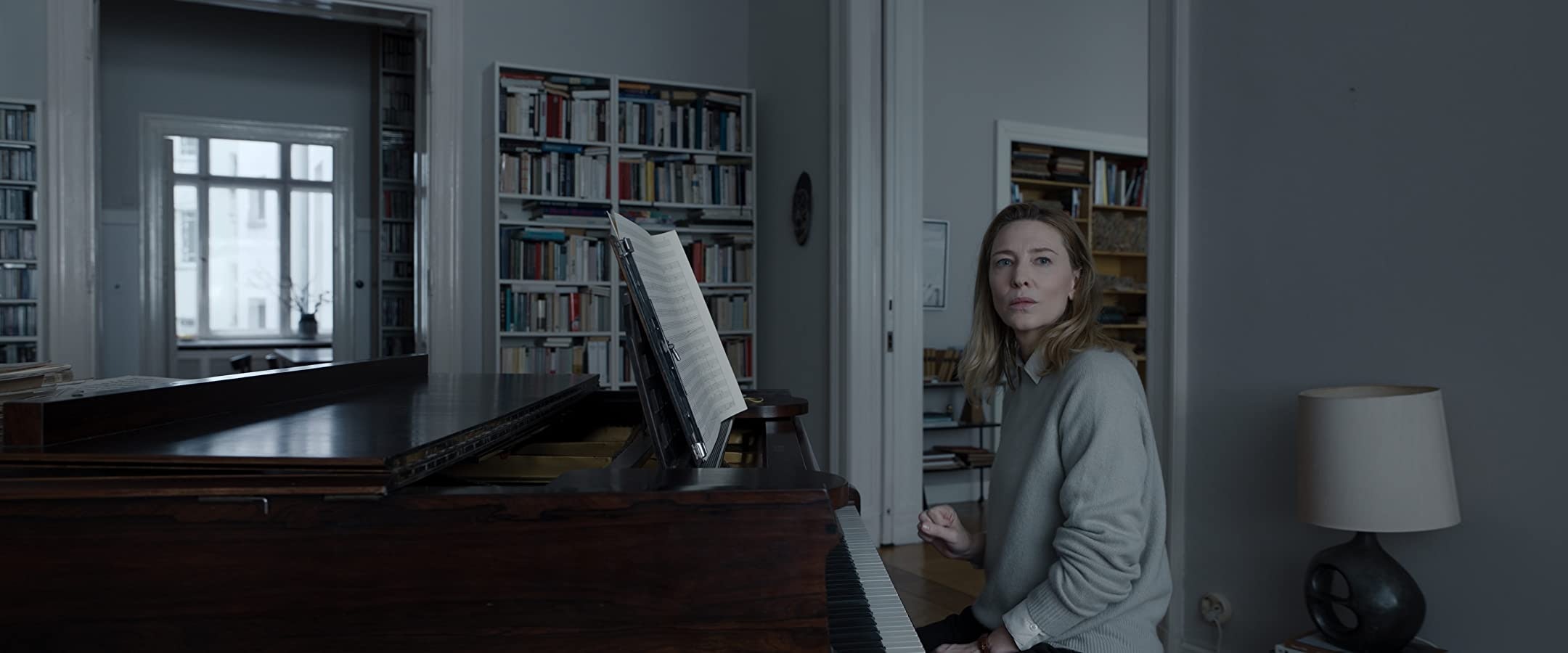
Few movies about music contain as little music, quantitatively speaking, as Tár. And few contemporary American filmmakers approach sound design as deeply or precisely as Todd Field, the writer and director who dreamed up the world-renowned conductor known as Lydia Tár (Cate Blanchett). The nondiegetic music in Tár is so faint that, on first viewing, I scarcely noticed it was there. Instead, the music Lydia is playing or conducting — Bach’s Prelude in C Major, Mahler’s Symphony No. 5, even the deranged accordion romp “Apartment for Sale” — effectively becomes the score to her own downfall.
“Our birds in this movie are a character who’s attenuated to sound in a very particular manner,” Field tells me from Mexico, where he’s on holiday. He notes that Lydia Tár suffers from misophonia and misokinesia. “If you speak to people in that position who are conductors, it’s not uncommon that they have a version of this affliction. There’s a reason they’re drawn to that vocation because it’s the only time they can control sound. They’re bothered by sound. They don’t like background music.”
Thus, what Tár has in common with The Birds is a heightened sensitivity to sound, a certain awareness of sound as an encroaching threat. Both films use diegetic sound rather than score during their opening credits — Tár incorporates the sound of Lydia Tár recording an Icaro song from an indigenous tribe in Peru — and both films prioritize intense aural subjectivity, forcing the viewer to hear what our icy blond protagonist is hearing.
“It would have been absurd to underscore someone’s life who makes music for a living,” Field says. “People have done it recently in several films. But I don’t know why one would do that. It seems like a gigantic missed opportunity because the interesting part for me in someone’s life is the in-between places. And if they’re making music, then the in-between places become really important.”
“The Birds has infected anyone, consciously or subconsciously, probably, that thinks about films.”
The unnerving quiet of Tár makes the unwelcome sounds that disturb Lydia’s daily life (a ticking clock, a caregiver alarm, a far-off scream) that much more striking. And when there is music emanating from an orchestra on screen, “it’s real,” Field notes. “What you hear is what you’re seeing.”
Like No Country, Tár does, in fact, have a musical score (this one composed by the Icelandic musician Hildur Guðnadóttir), but it operates with great subtlety and restraint. It’s a low, ambient hum that merges with the overall sound design. “The big thing Todd said about that, he wants it to be felt rather than heard,” recalls sound editor Stephen Griffiths. “So you’d kind of have this sense of mounting dread.”
“It’s not meant to be noticed,” Field says, noting that he deliberately had the score mixed very, very low. “And I did the same thing on the other two films [I directed],” 2001’s In the Bedroom and 2006’s Little Children.
Was The Birds an influence on Tár? “Not consciously,” answers Field. “I would say that The Birds has infected anyone, consciously or subconsciously, probably, that thinks about films. The way that film begins is so magnificent.”
And then he speaks about Hitchcock’s film — particularly the opening sequence, in particular — with such detail and passion that it’s clear he’s watched and absorbed it many times.
“You know that there is inherent threat from the very beginning. You know that you feel like you’re being tracked. The sounds of the birds are further away from you, and the way he deals with perspective, by the time they’re coming into frame, it feels like they’re descending on us. Like they’re preying on us.
“We’re like pigeons, no pun intended,” Field adds. “Hitchcock has you eating out of his hands.”







